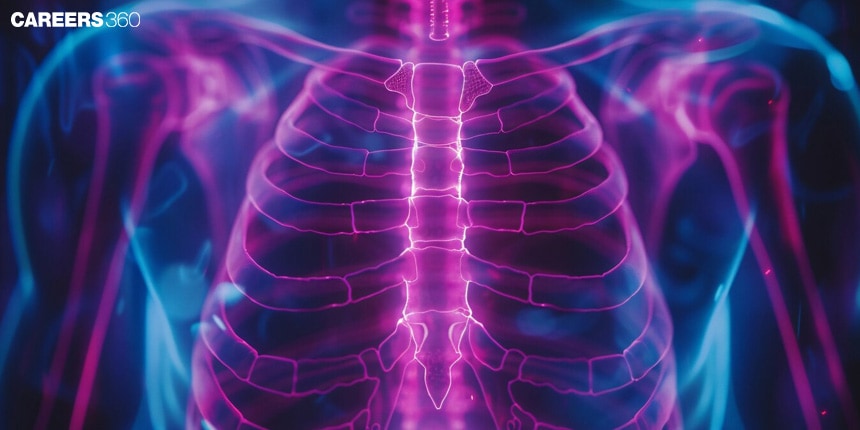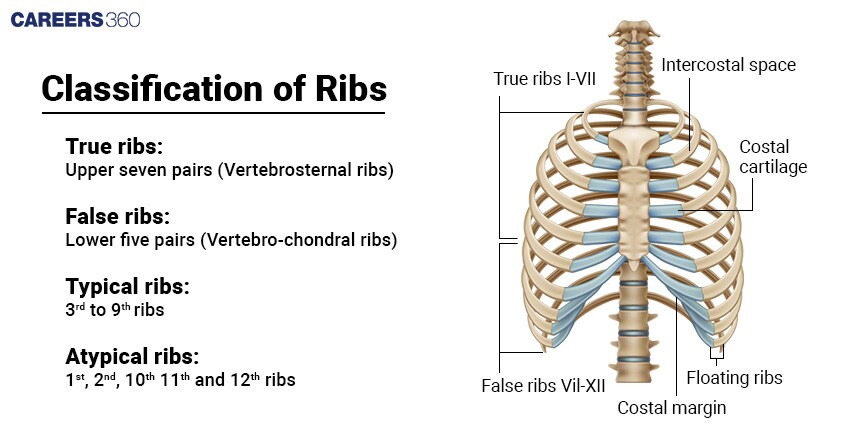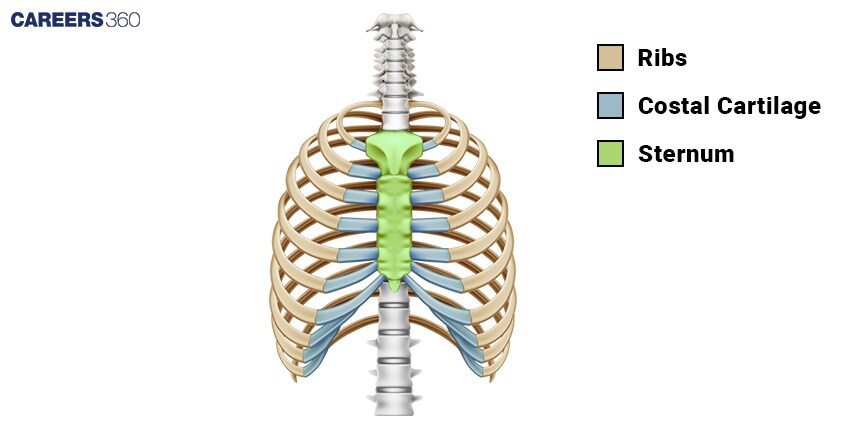Ribs And Rib Cage: Anatomy, Function, Types, Information, Parts, Faqs
Definition Of Ribs
This is biological engineering at its best: the human rib cage helps protect and support some of the most vital organs of the human body. It has a bony framework, comprising ribs and sternum bones. Accompanied by the сопроврц cage, it provides a sturdy yet agile space for heart and lung protection through every breath, pulsation, and movement. The anatomic structure forms part of the integral mechanism of respiration. Ribs are not just rigid protective coverings but are dynamic to respiration and movement. An understanding of anatomy, types, functions, and development of the rib cage is very important to appreciate how this human body stands in various situations yet maintains itself substantially.
Don't Miss: Most scoring concepts for NEET | NEET papers with solutions
NEET 2025: Syllabus | PYQs | Crack NEET in 2 months - Study Plan
NEET Important PYQ & Solutions: Physics | Chemistry | Biology | NEET PYQ's (2015-24)
- Definition Of Ribs
- Rib Anatomy: Structure
- Classification Of Ribs
- Rib Cage – Human Body
- Functions Of The Ribs
- Development Of The Ribs
- Ribs In Other Animals
- Clinical Importance
- Recommended video on Ribs And Rib Cage

Rib Anatomy: Structure
Ribs are flat, narrow, and curved strips of bones which are found in all vertebrates. In humans, there are typically twelve pairs of ribs, each comprising several parts.
Parts Of A Typical Rib
Costal groove
Tubercle
NeckShaft
Head with two articular facets
Exceptions In Structure Of Ribs
The first rib possesses two costal grooves, and one articular facet, and is wide and short.
The second rib is long and thin.
The tenth has only one particular facet.
The eleventh and twelfth ribs don't have a neck and their articular facet is single.
Ribs articulate posteriorly with the thoracic vertebrae and anteriorly with the sternum through costal cartilage and form sternocostal joints.
Classification Of Ribs
Ribs can be classified according to their connection towards the sternum.
True Ribs
First to seventh ribs
Articulates directly with the sternum using costal cartilage only
False Ribs
Eighth to tenth ribs
Indirect articulation with the sternum via the cartilage of the seventh rib
Floating Ribs
Eleventh and twelfth ribs
Does not articulate with the sternum

Rib Cage – Human Body
The rib cage is a basketlike skeleton structure made from the ribs, the sternum, and the vertebral column. It offers bony protection to the lungs as well as the heart, but at the same time, has the power of expansion and contraction, which enables respiration.
Functions Of The Ribs
Some functions of the ribs are:
Protection
Protects the heart and lungs from physical injuries
Respiration
Expansion and contraction aid in breathing
Support
Maintains the structure and shape of the thorax
Development Of The Ribs
Ribs develop from the sclerotome, a portion of paired paraxial mesoderm called somites, which forms vertebrae.
Ribs In Other Animals
Jawed Fish: Has dorsal and ventral ribs
Reptiles: First forms showing rib attachment to the breastbone
Snakes: Ribs attach to all vertebrae
Mammals: Ribs attach only to thoracic vertebrae
Turtles: Eight pairs of ribs
Amphibians (Frogs): No ribs
Clinical Importance
The clinical importance is explained below-
Fractured Ribs
Caused by accidents, falls, or trauma
Symptoms include pain and difficulty breathing
Dislocated Ribs
Results from lifting heavy objects
Causes severe pain
Costochondritis
Inflammation of costal cartilage
Can mimic heart attack pain
Rib Tumors
Primary or secondary lesions
Medical evaluation warranted
Recommended video on Ribs And Rib Cage
Frequently Asked Questions (FAQs)
There are true ribs, false ribs, and floating ribs.
Ribs are the portion or thorax of the chest in tetrapods.
Female rib cages are on average about 10% smaller in volume than male rib cages; the importance of this difference is not known.
The first seven pairs of ribs, which join directly to the sternum through their costal cartilages, are the true ribs.
The head of a rib is the end nearest the vertebra to which it articulates and has articular surfaces for connection.
Also Read
30 Nov'24 06:17 PM
28 Nov'24 05:27 PM
28 Nov'24 04:14 PM
28 Nov'24 03:07 PM
28 Nov'24 03:06 PM
28 Nov'24 01:21 PM
28 Nov'24 12:16 PM
